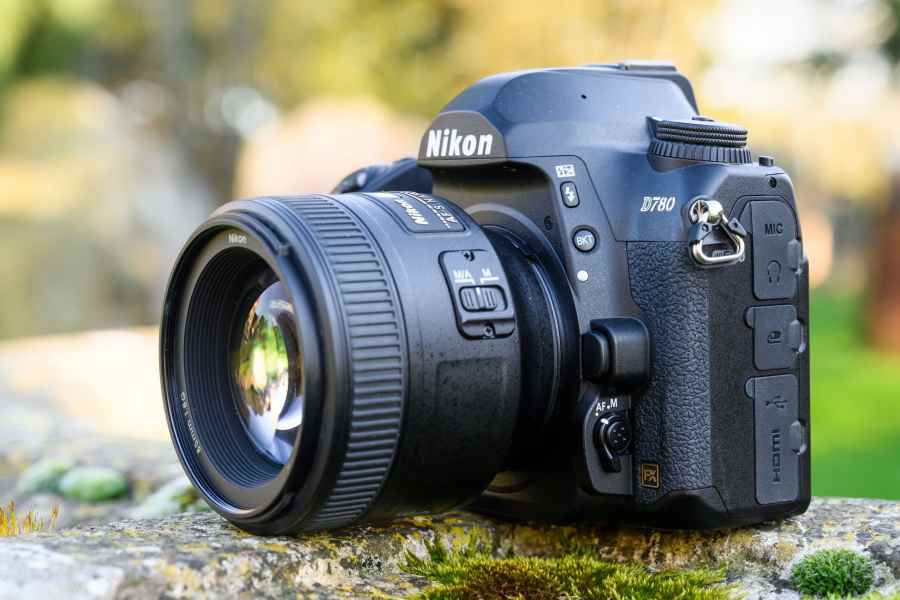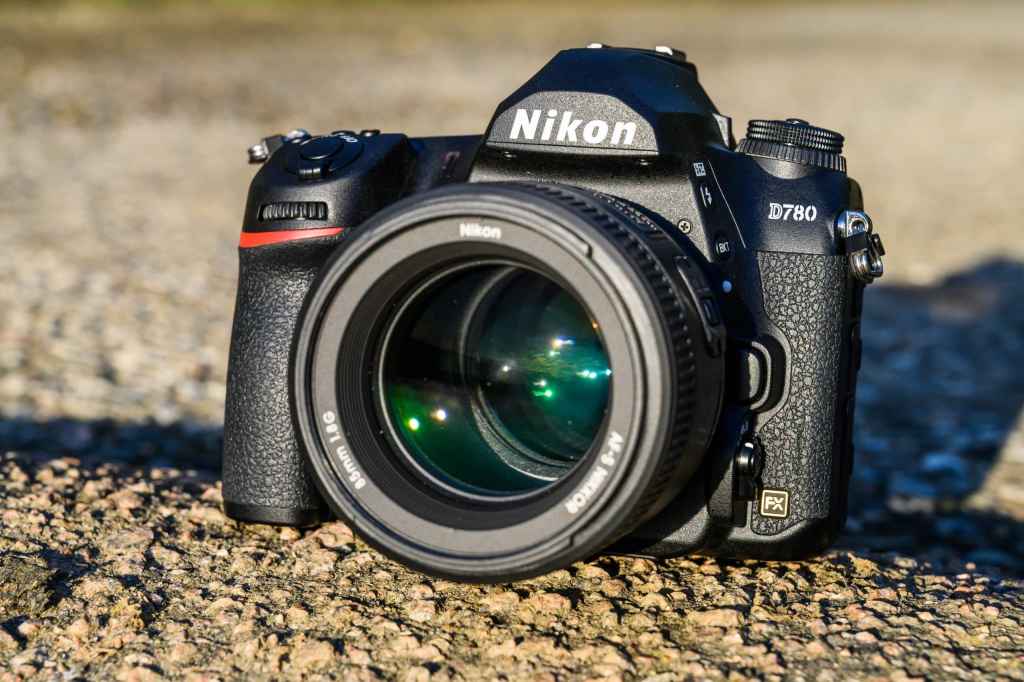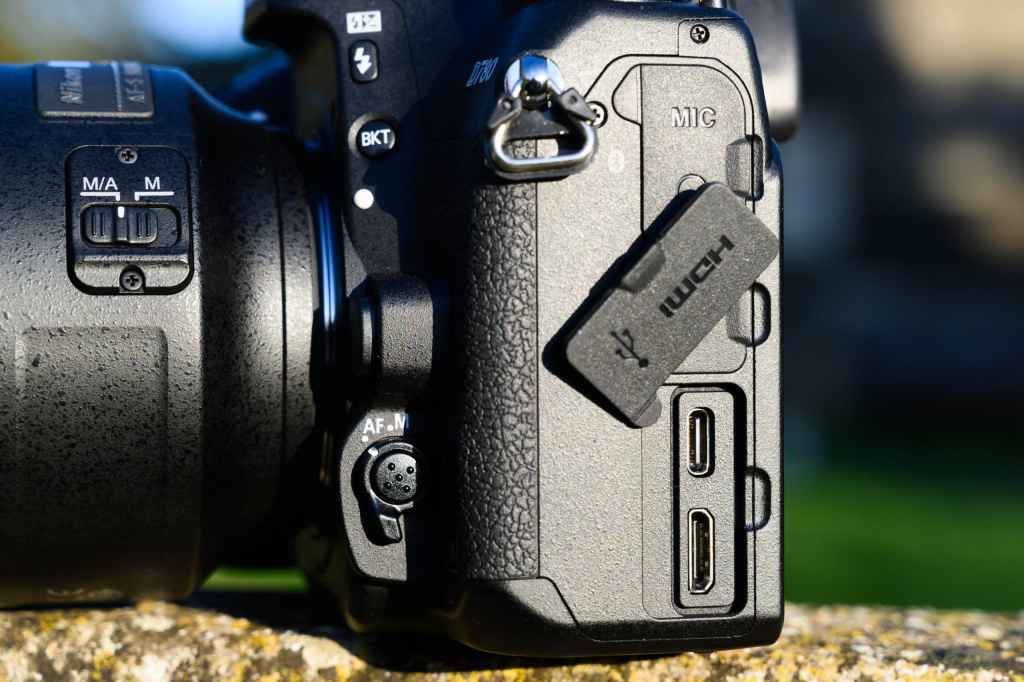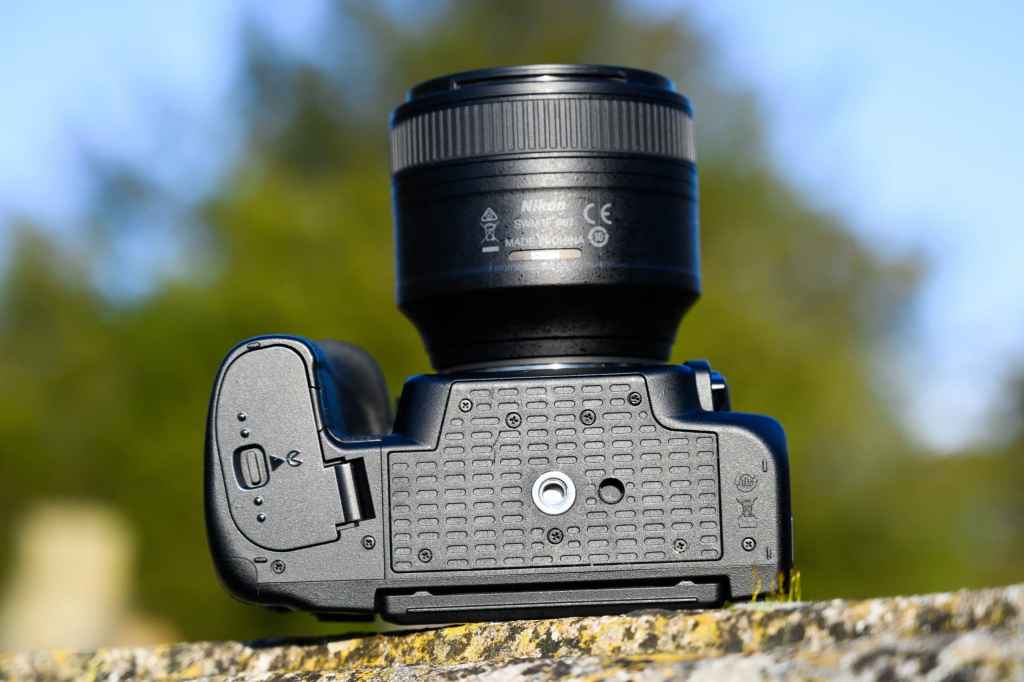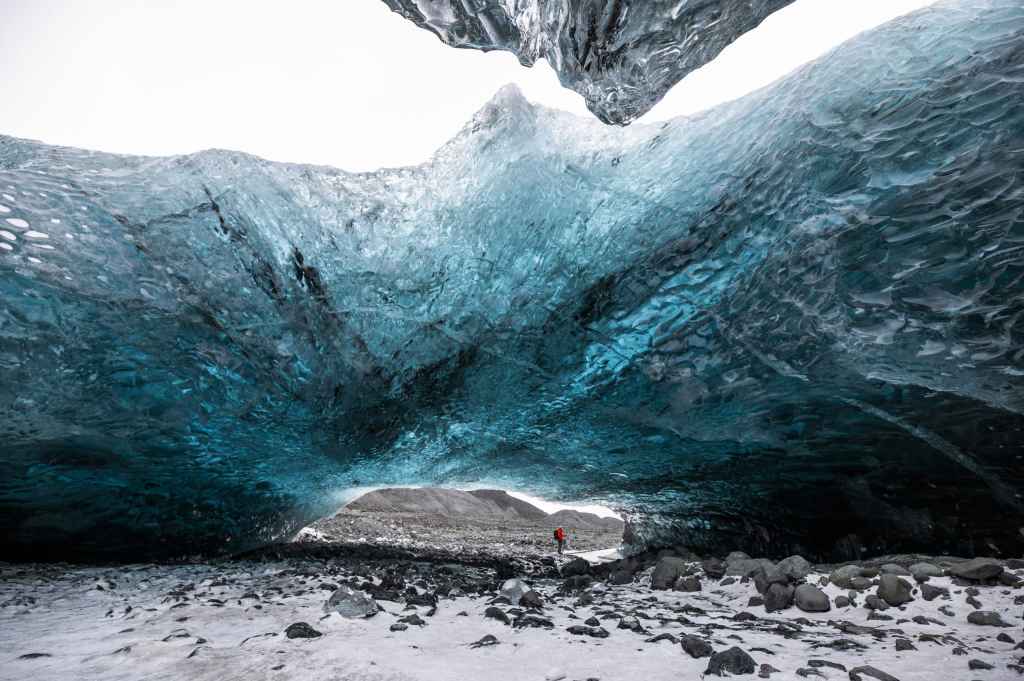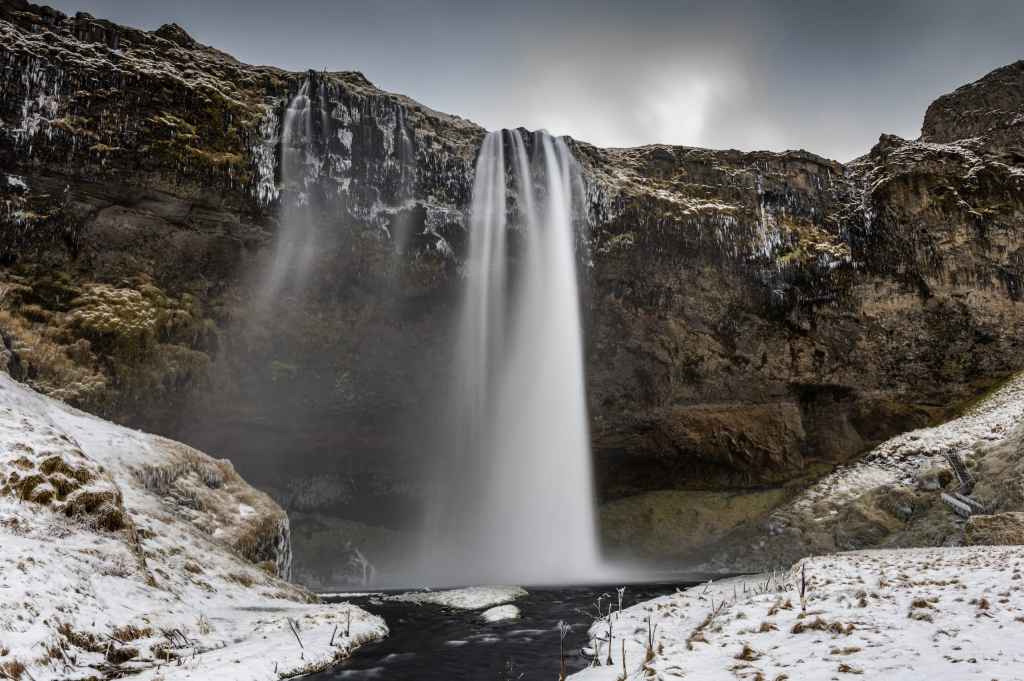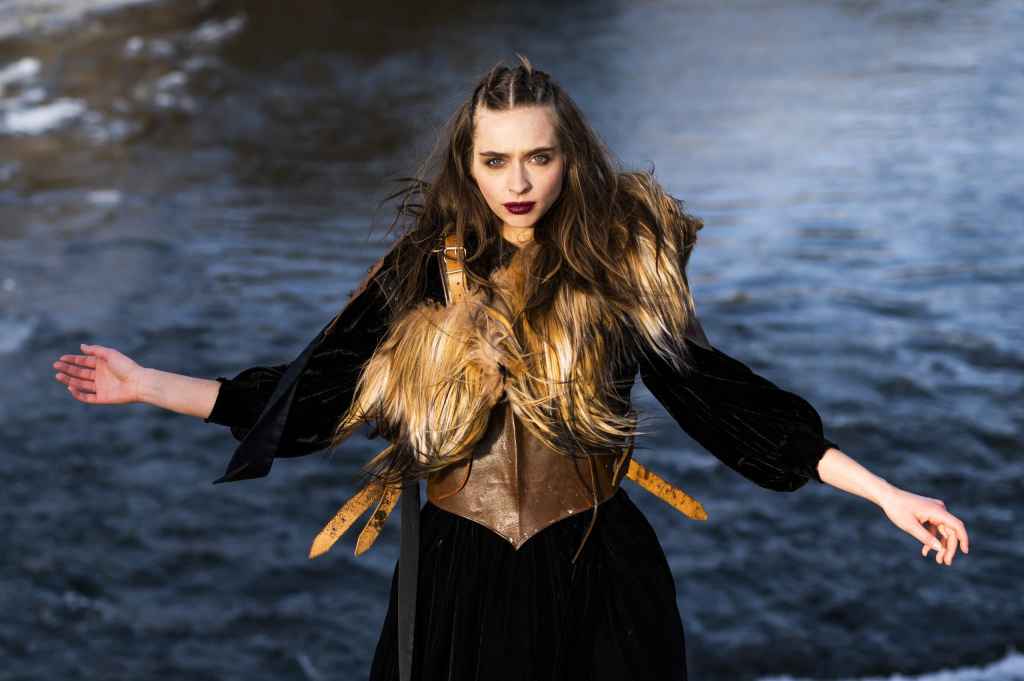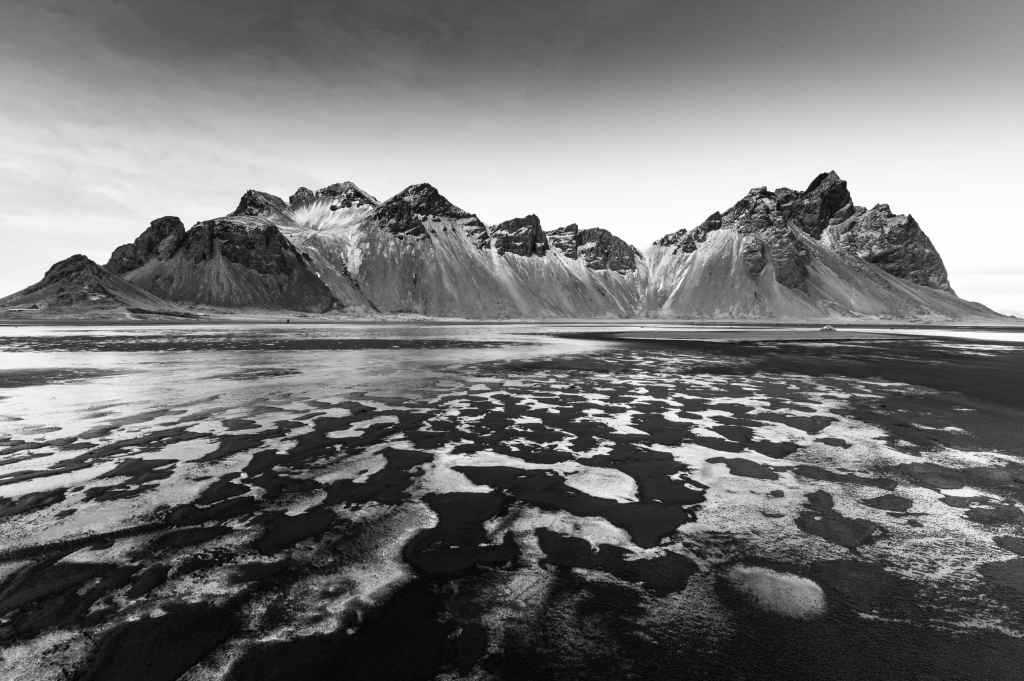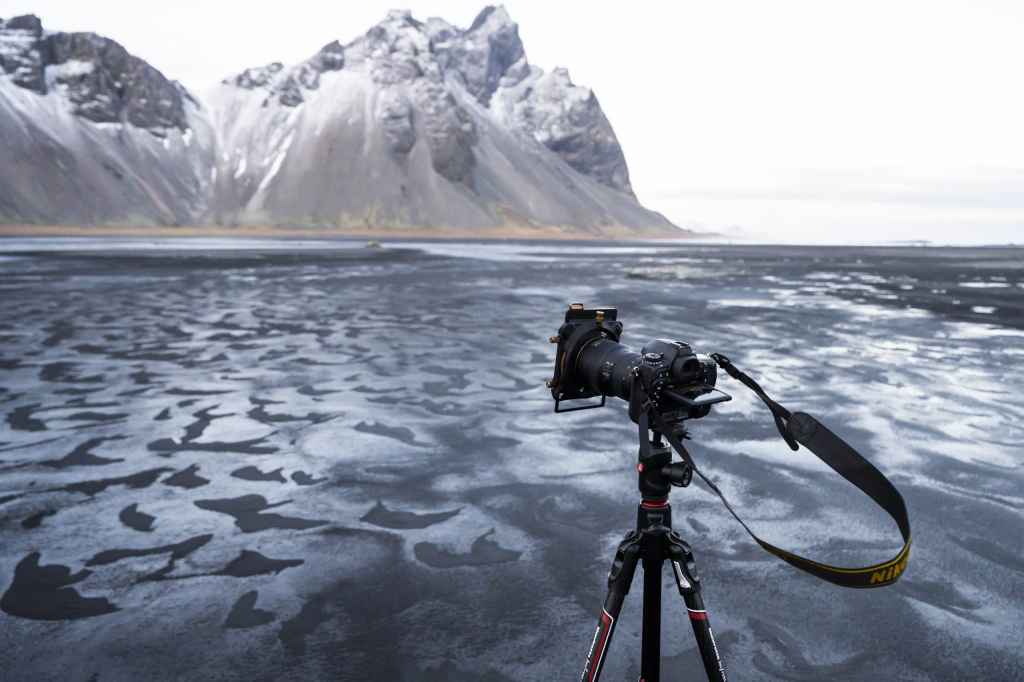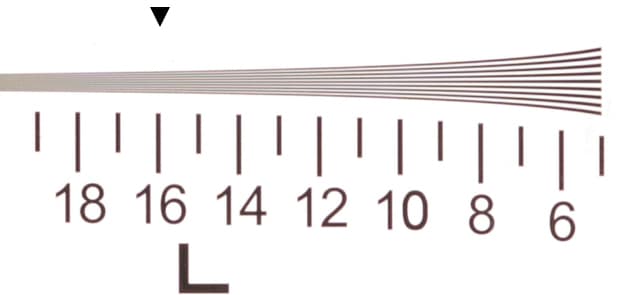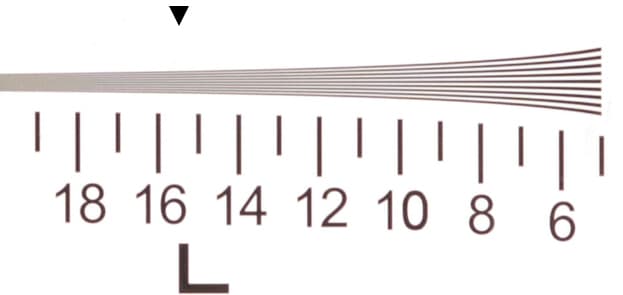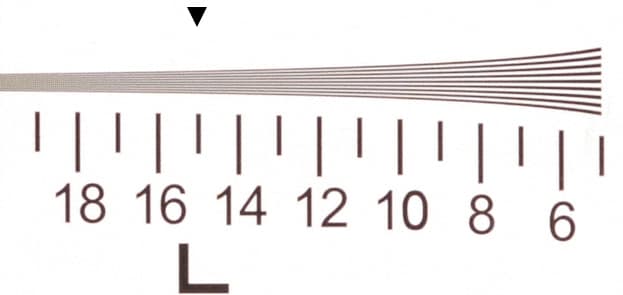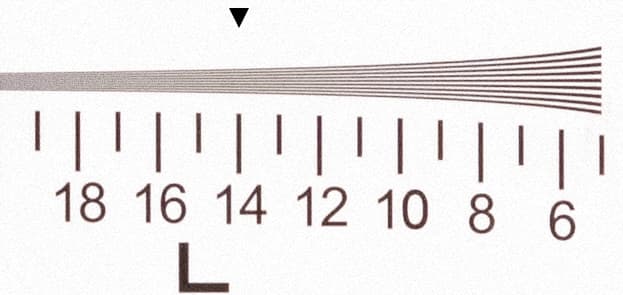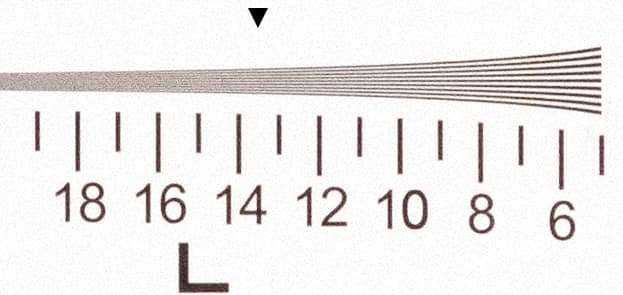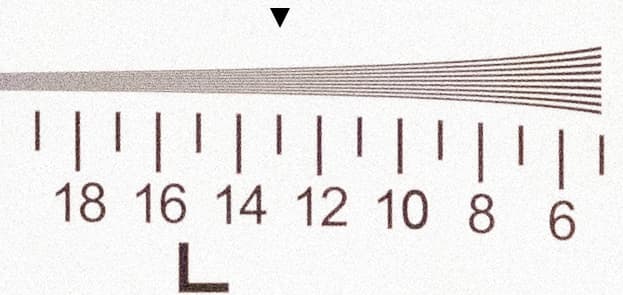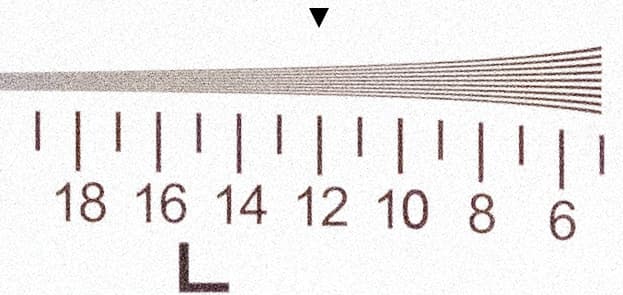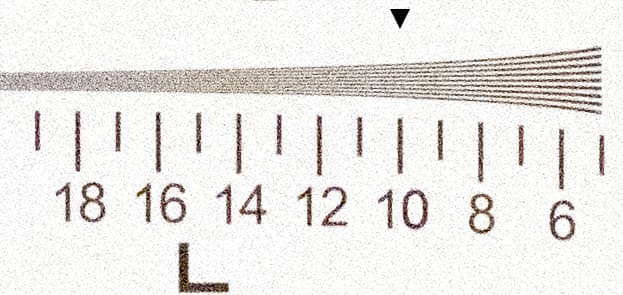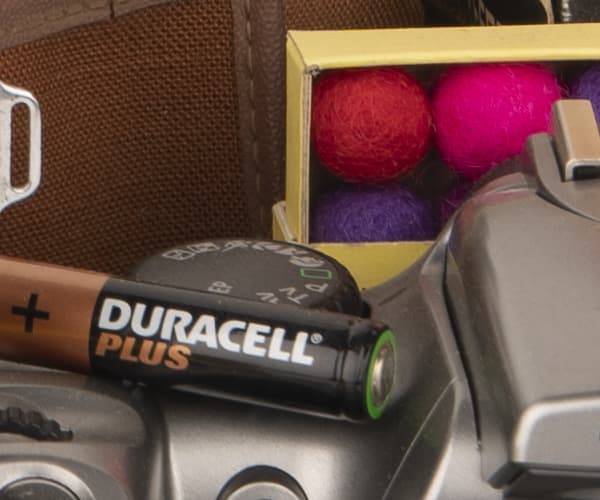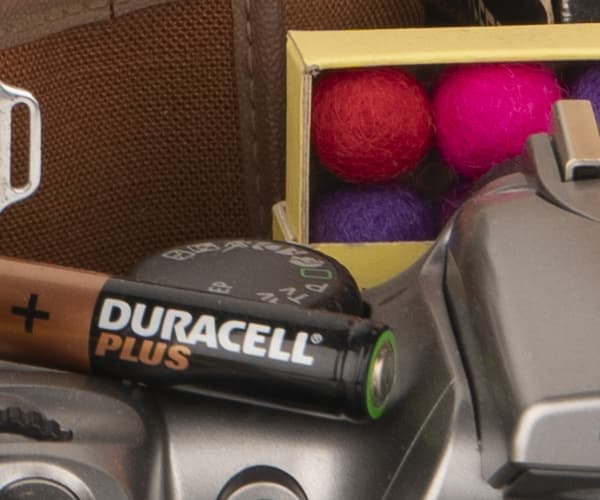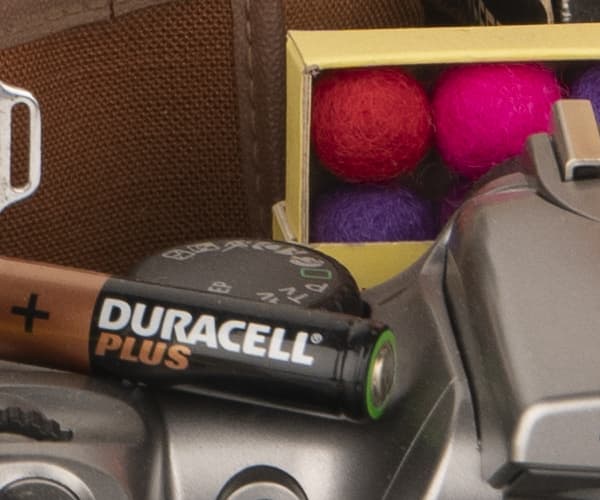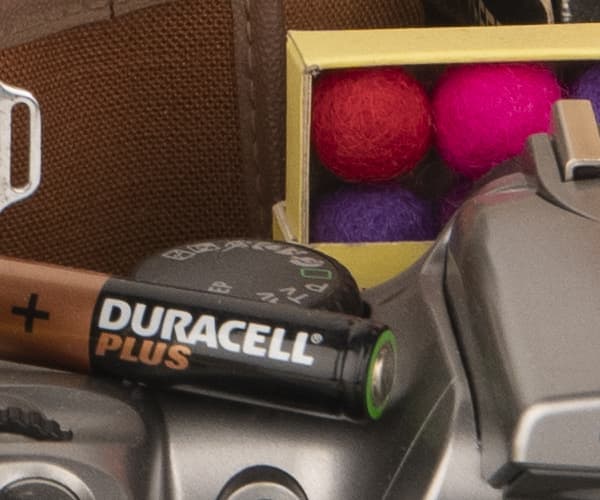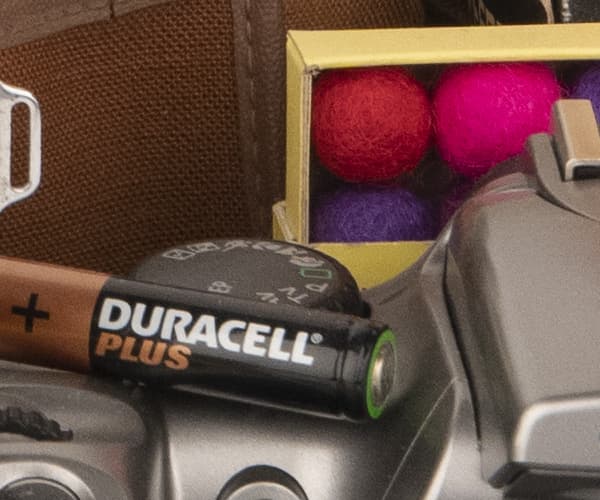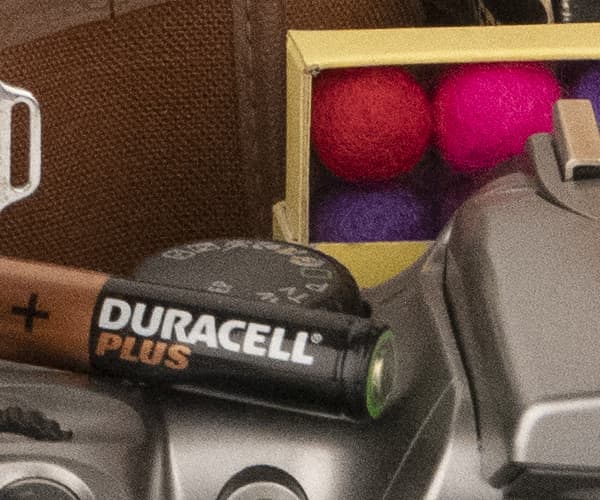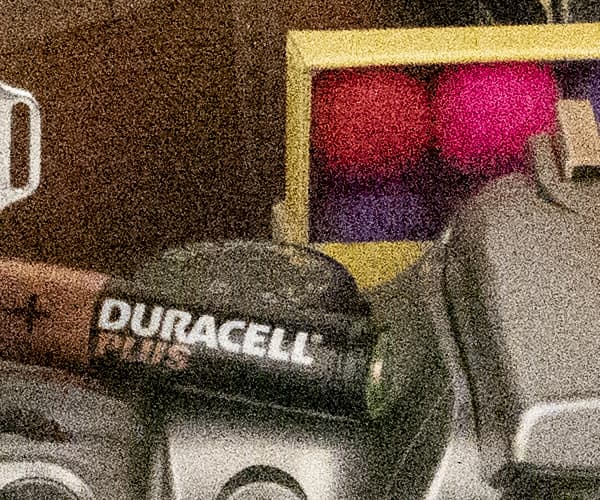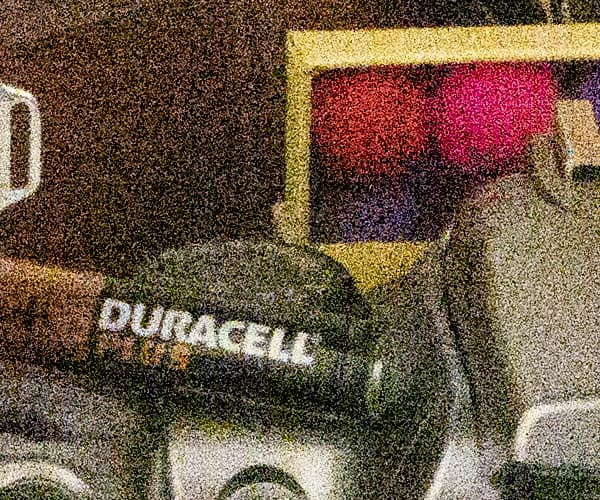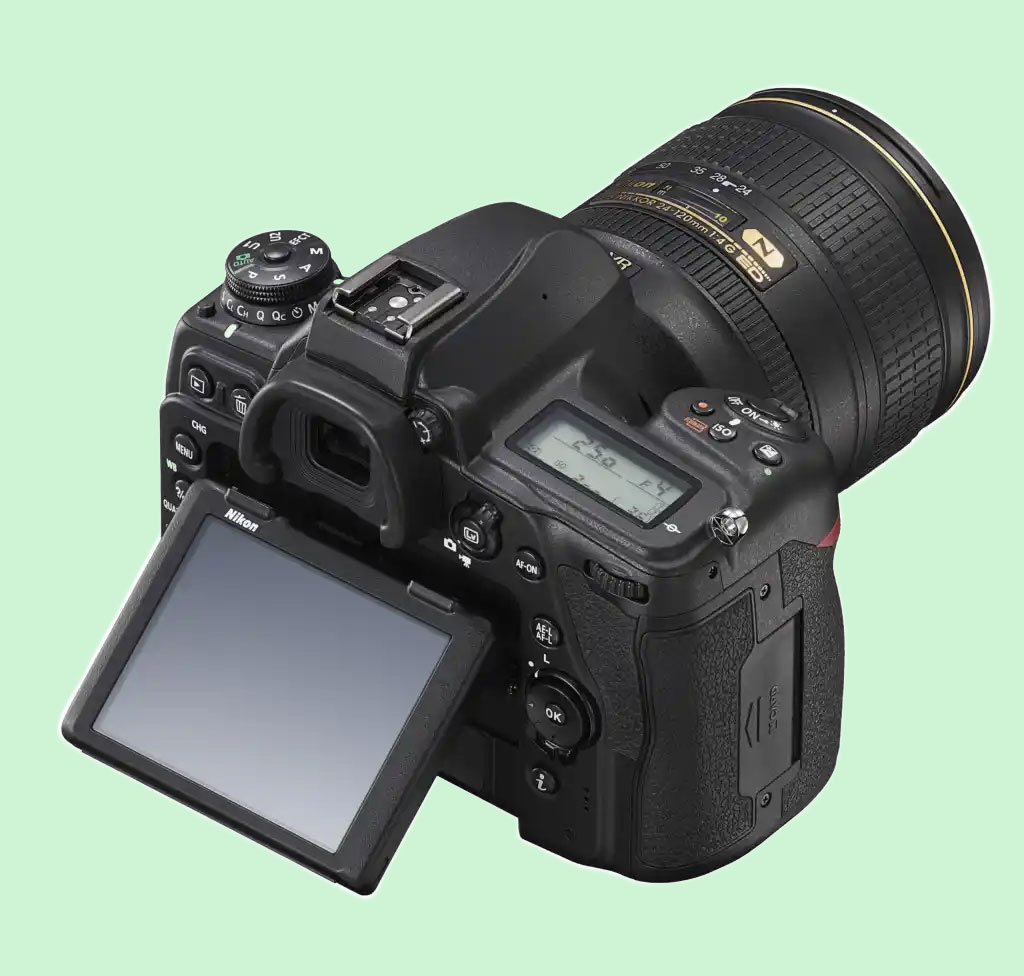Amateur Photographer verdict
A sensational DSLR, built to a professional standard and a sheer delight to use. Its modern additions make it the complete all-rounder.- Extremely robust, professional build
- Sensor produces high quality images even at high ISOs
- Impressive eye detection in live view mode
- Excellent battery life with in-camera USB charging
- Lacks pop-up flash and AF assist lamp
- No joystick
- No metal contacts for portrait control with battery grip
- 4-way controller lock is easily knocked
The Nikon D780 is a high-quality 24MP full-frame DSLR, is still available new, with plenty now in the second-hand market, too. For such a powerful camera with modern features, it is attractively priced in the UK and the USA at the time of writing. As one of the last Nikon DSLRs to be released, could it also rank among the best DSLRs across all brands? Find out in our full review.
Introduction
Nikon remains committed to its DSLR system, despite the D780 being the last F-mount camera it released, in early 2020. In the meantime, they have added no fewer than seven Z-mount models. These include the hugely impressive Z9 that has revitalised the brand’s standing among discerning photographers, reviewers and content creators worldwide. Most recently, Nikon introduced the Z8 and it’s receiving rave reviews. Read what AP’s Andy Westlake thought about it in his extensive review here.
At a glance
- $1,397 / £1,459 new, body only
- $950- $1,400 / £650 – £1,300 used, body only
- 24.5MP full frame CMOS sensor
- Nikon F mount
- ISO 100-12,800 (ISO 50-204,800 extended)
- Hybrid AF system
- 3.2in, 2,360k-dot tilting touchscreen
- 12fps continuous shooting in Live View (7fps via OVF)
- In-camera USB Type-C charging
Whatever Nikon’s longer term plans for its DSLR family, there is no denying that the D780 has proved itself a highly featured camera that’s great value for money, too. For prospective buyers, it also benefits from a massive selection of F-mount lenses available to it.

The D780 arrived as the long-awaited successor to the Nikon D750 – one of Nikon’s most popular and best-selling DSLRs. Said to be the company’s most versatile DSLR ever, it profits from lessons Nikon has learned from mirrorless to make for a better all-rounder. The question was; could the D780 attract passionate enthusiasts and professional photographers in a world populated with smaller, lighter, cheaper full-frame mirrorless cameras? In our view, the D780 is a class act of great potential.
Nikon D780: Features
Whereas the D750 had a 24.3-million-pixel full frame CMOS sensor, the D780 employs a 24.5-million-pixel full frame CMOS chip that’s understood, but not officially confirmed, to be the same as that used in the Nikon Z 6.

The D780 sensor has a low-pass filter to eliminate moiré and backside-illuminated structure. This maximises its light gathering capabilities across an ISO 100-51,200 range (expandable to ISO 50-204,800). It also benefits from no less than 273 on-chip phase detection pixels to enhance its focusing performance in Live View.
Although Hybrid AF systems aren’t new in DSLRs, it’s the first time we’ve seen a Nikon DSLR borrow an AF system for Live View from their mirrorless models. The outcome is all the benefits of a fast, reliable Live View performance, just as with Nikon’s Z 6 and Z 7, with advanced functionality such as Eye-Detection AF – while supporting a 51-point autofocus system when shooting via the optical viewfinder.
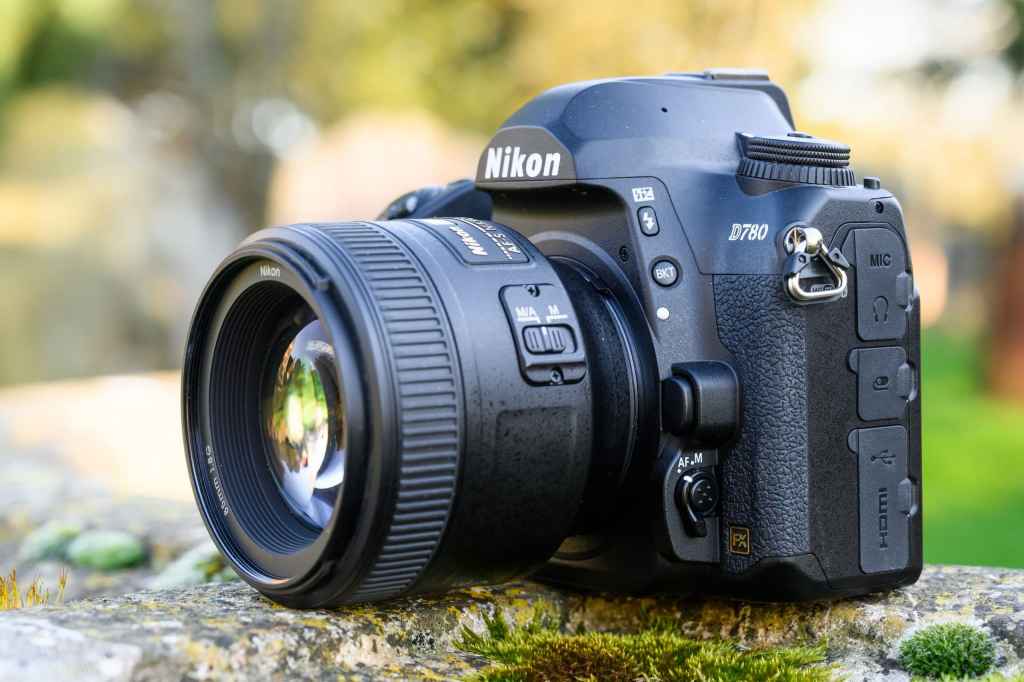
The 51-point AF system, which has 15 cross-type points, is the same as the D750’s and performs across a range of -3 to +19EV. Activating Live View sees this range extend to -5EV, or -7EV in low-light AF mode. Keeping on the subject of focusing, the 273-point Hybrid AF system covers 90% of the frame horizontally and vertically, whereas the focus points in the viewfinder remain tightly grouped towards the centre and don’t extend to the boundary of the frame.
There are all the DSLR/mirrorless AF-area modes you’d expect, including single-point, 9, 21 or 51-point dynamic-area AF, 3D tracking, group-area AF and auto-area AF when using the viewfinder. As well as the customary AF-S, AF-C, AF-A and AF-F servo modes, Pinpoint AF for precise focusing in Live View is also available.
There’s much more besides the changes to the sensor and focusing. With Nikon’s latest EXPEED 6 image processor on board the D780 can now shoot up to 7fps via the viewfinder, which can be increased to 8fps (14-bit) or 12fps (12-bit) during silent shooting in Live View.
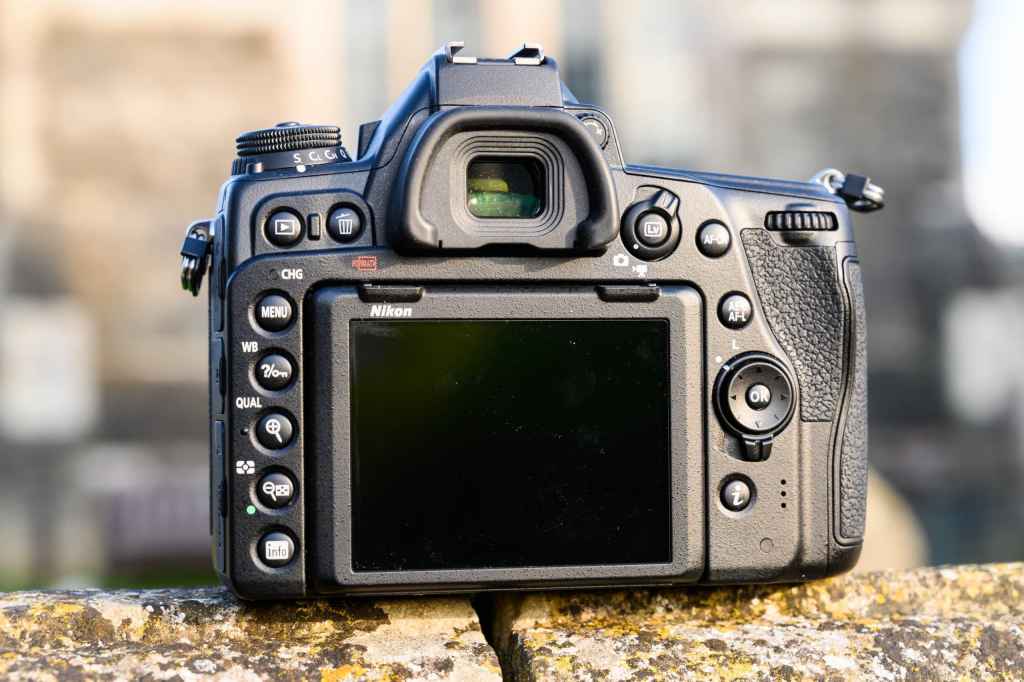
The shutter speed range improves on the D780 too. It now stretches from 30secs to 1/8000sec with the option to dial in shutter speeds up to 900 seconds (15mins) in manual mode. Exposure metering is left in the capable hands of Nikon’s 180K-pixel RGB sensor, inherited from the D850. As we’ve seen before, it’s this metering sensor that’s used for subject-recognition purposes, which feeds information to the AF system for accurate and precise subject tracking.
Also like the D850, the D780 can be used with Nikon’s ES-2 film digitising adapter to turn negatives or slides shot on 35mm rolls of film into 24MP digital files. Other new features include a greater selection of picture control modes, as well as a focus-stacking mode that can be used with focus peaking to create shots with a large depth of field by manually selecting the distance of each focus step.

In typical Nikon fashion, the D780 presents a useful DX Crop mode. The camera automatically selects this when DX lenses are attached, but it can also be used in combination with FX lenses for those who’d like to gain a bit more reach at the long end. It uses a smaller area of the D780’s sensor, producing images with a 10.3MP resolution and 3936×2624 pixel count. Turning the viewfinder mask display on from the image area options darkens the area outside of the crop boundary to make it easier to visually see what falls within the frame. It can also be used when the image area is set to 1:1 (16.1MP) or 16:9 (20.6MP).
Another advantage the D780 has over the D750 is its ability to record uncropped 4K UHD video that is downsampled from 6K capture. Frame rates for 4K include 30/25/24fps and slow-motion footage can be recorded at up to 120fps at Full HD 1080p resolution.
Videographers will also appreciate the option to record 10-bit footage in N-Log; preserving as wide a dynamic range as possible. With support of hybrid log gamma recording and timecode output via 10-bit HDMI, the D780 is a very serious tool for video. Adding to this is the capacity to shoot 4K UHD time-lapse movies in-camera. I’d recommend turning exposure-smoothing on, which effectively reduces variations between images to create seamless transitions.
At the side of the body, the D780 has three rubber flaps. The 3.5mm microphone and headphone ports are located behind the one at the top, there’s a separate flap in the middle for plugging in a remote release and beneath it you’ll find an HDMI Type C connector and USB Type C port that facilitates in-camera charging with compatible EN-EL15b batteries.

As for wireless connectivity, the D780’s Bluetooth pairing and Wi-Fi options both work seamlessly with Nikon’s free-to-download SnapBridge app for iOS and Android mobile devices.
Nikon D780: Silent shooting
Like the Nikon D850, the D780 presents several different ways of quietening the mechanical shutter. The shutter has a rather satisfying sound to it during day-to-day shooting when using the viewfinder, but it does seem rather loud when there’s not much going on around you.
The Q and Qc modes on the mode dial are the quiet release shooting modes. These dampen the sound of mirror slap slightly. In Qc mode the D780 can shoot continuously at 3fps.
To shoot even more discreetly, Nikon has implemented a zero-vibration electronic shutter that enables users to capture images in total silence when Live View is used. With Silent Live View Photography mode turned on from the photo shooting menu, there’s no noise whatsoever when you press the shutter button.
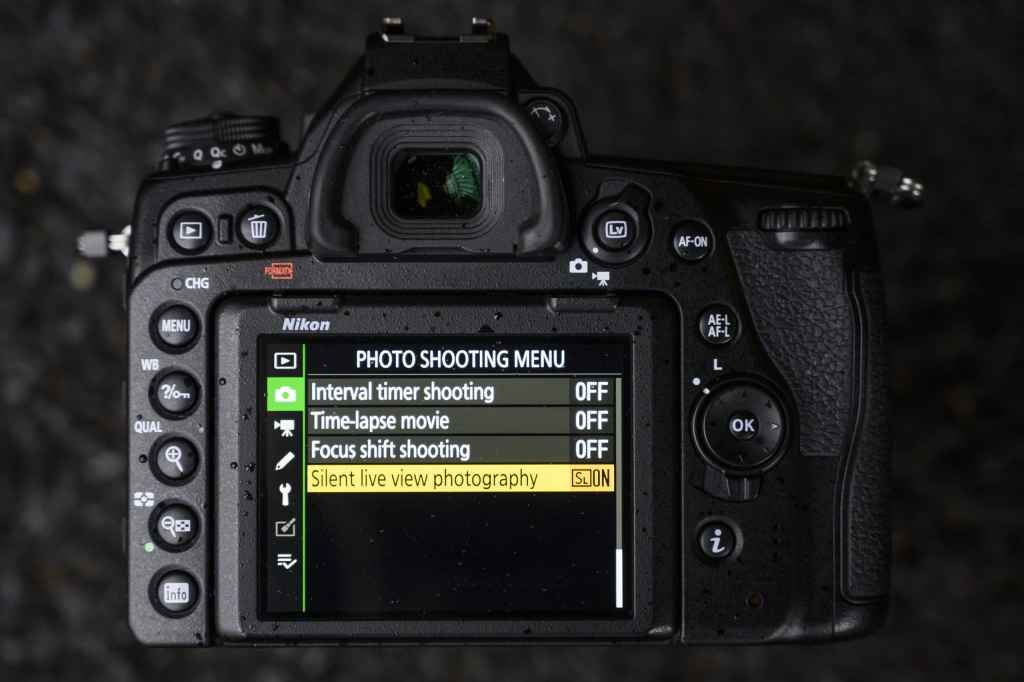
Set the drive dial to its continuous high (CH) setting with silent live view mode turned on and users can shoot at 12fps without a peep out of the camera – great for wedding and wildlife shooters who want to shoot without disturbing or frightening their subjects. The only caveat to using Silent Live View Photography mode is rolling shutter, which can result in visible distortion of fast-moving objects.
Nikon D780: Build & Handling
Photographers who have used the D750 will be familiar with the feel of the D780 in the hand, whereas those who are maybe looking at it as an upgrade from an entry-level DSLR will immediately sense that it’s significantly larger and heavier. Viewed alongside the Z 6 and Z 7, it looks as if Nikon’s mirrorless cameras have been on a lean diet of fruit and vegetables compared to the D780 that has been putting on the pounds and pumping iron, resulting in a chunkier appearance.
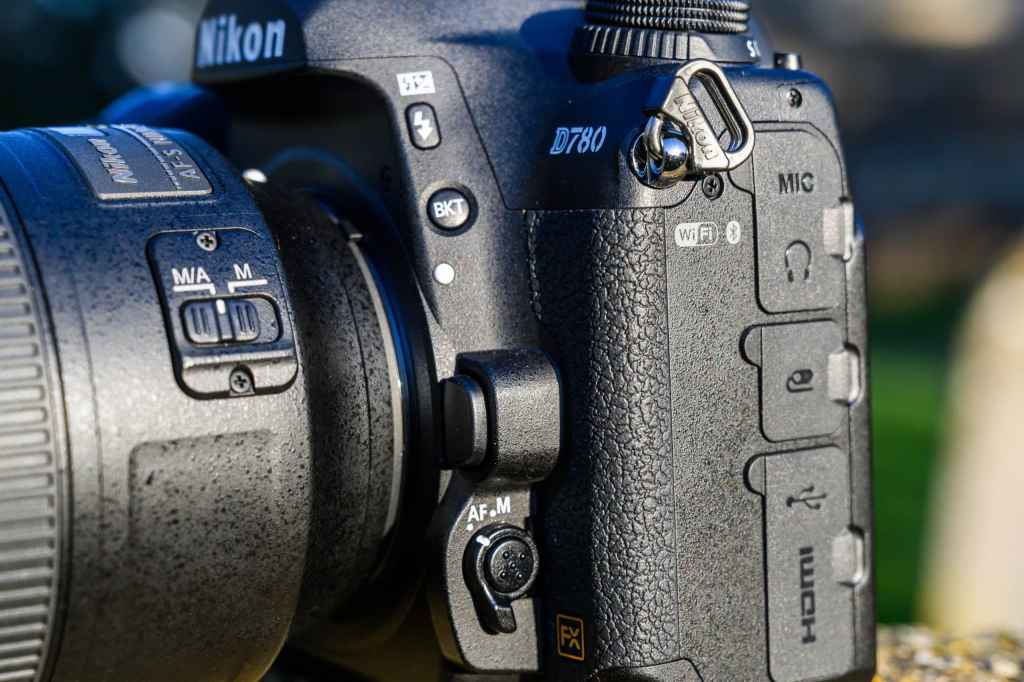
Weighing 840g (body only), the D780 is 165g heavier than the Nikon Z 6 and Z 7. Although this may not seem like much on paper, I found the extra weight of the D780 noticeable when I switched between Nikon’s DSLR and mirrorless systems and had to carry them both for long periods of time.
Extensive weather sealing and tough magnesium alloy body are to be expected from a model of the D780’s calibre and price. It’s an extremely strong and well-constructed camera, with a build quality that feels in the same league as the D850. It’ll allow photographers to continue shooting when the going gets tough or when challenging conditions persist.
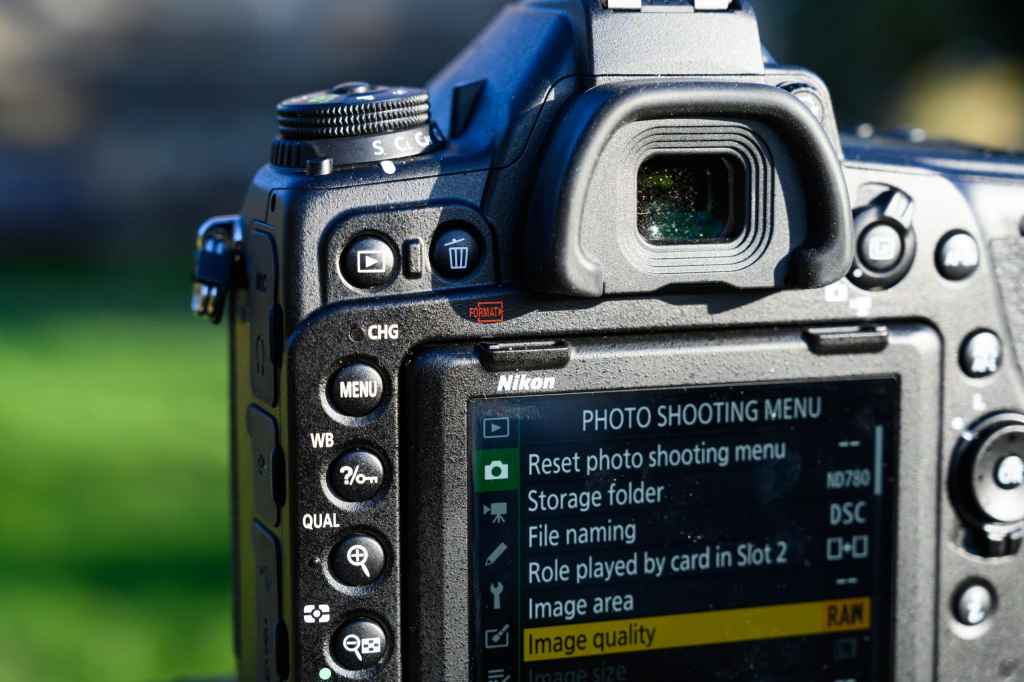
The D780’s size should be compatible with larger hands and fingers – or anyone uncomfortable with their handling of smaller mirrorless models. The advantage of the larger body is that there’s more room for buttons, which allows for natural spacing between them.
Like the D750, buttons and dials are large and there’s a line of five buttons arranged vertically down the side of the screen. However, not all of these are the same. In reply to customer feedback, Nikon has shifted the ISO button from the rear and positioned it between the exposure compensation and movie-rec button on the top plate for more intuitive control in combination with the rear dial. What was the ISO button on the D750 is now the metering mode button, which doubles up as a zoom out button in playback.
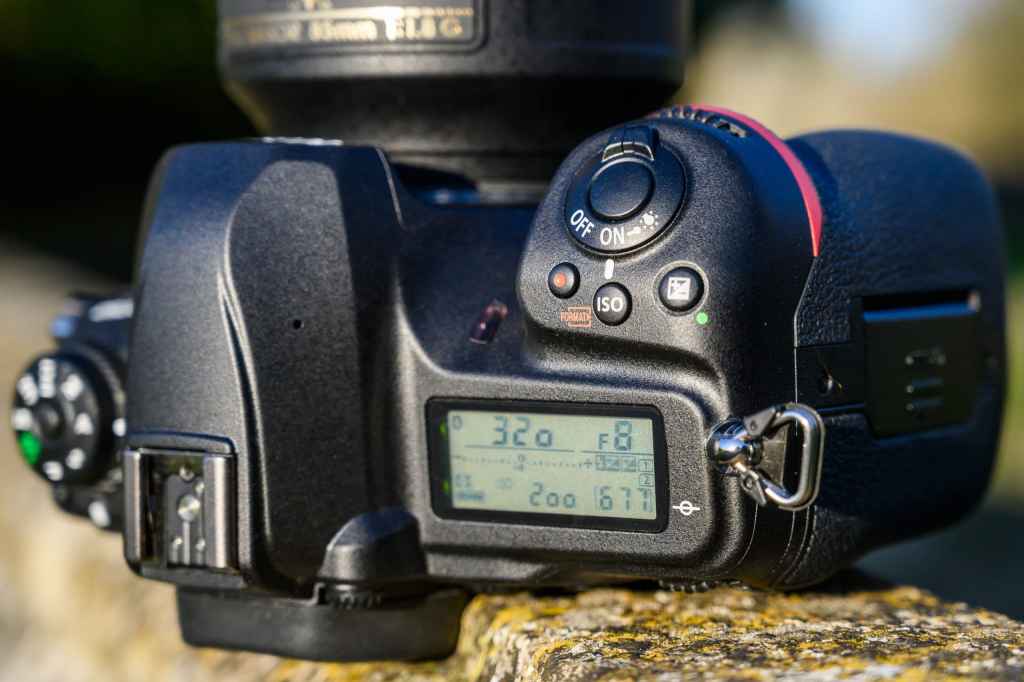
Other button changes see the Live View Button that’s encircled by the stills/video switch shifted up so it’s in easier reach of the thumb. A new AF-ON button for back-button focusing is added alongside and the AE-L/AF-L button takes the place of where the info button was on the D750. The info button has since shifted down below the four-way controller and with no joystick; the four-way controller is used to shift the AF point during viewfinder shooting. It offers diagonal movement as well as left, right, up and down, but I did knock the lock switch by accident occasionally, which did cause me to wonder why I couldn’t move the AF point at times.
The D780 no longer has a pop-up flash like the D750. However, radio-controlled advanced wireless lighting is supported and the flash compensation button that’s located above the bracketing button allows -3 to +1EV control in P,A,S,M shooting modes. In most other respects it’s similarly laid out to the D750. Users can glance down at a large rectangular top plate LCD, it has an AF button below the lens release to take quick control of AF modes. The preview button and Fn button on the opposite side of the lens mount are both customisable.
Nikon D780: Viewfinder & screen
There’s not a great deal new to report with regard to the viewfinder. It inherits the same pentaprism optical viewfinder from the D750, which has a magnification of 0.7x and offers 100% frame coverage. It’s possible to turn on a framing grid display to aid composition and I found myself assigning the Fn button to viewfinder virtual horizon, which loads a levelling guide on the horizontal and vertical axis to avoid shooting any wonky horizons.
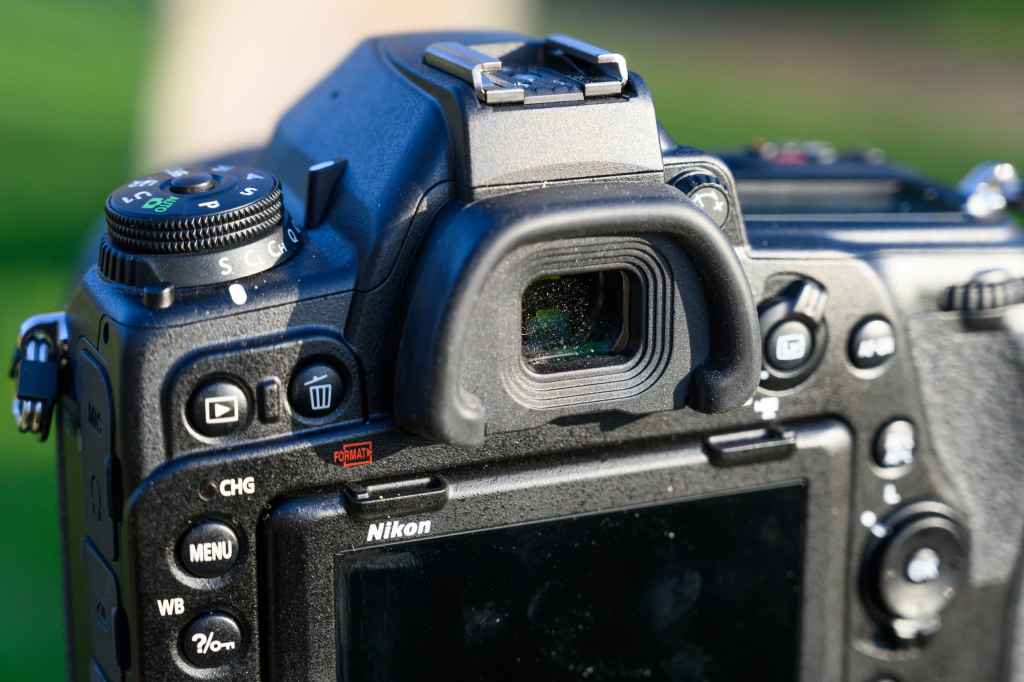
Unlike the D850, there isn’t a switch to block out the viewfinder to prevent any light leak issues during long exposures, however the rubber eyepiece can be removed and replaced with the DK-5 eyepiece cover that’s supplied in the box.
While the rear monitor remains the same size (3.2in) and tilts similarly to the D750’s screen, it improves by offering an improved 2.36-million-dot resolution and adds touchscreen functionality. Nikon’s recent touchscreens are known for their excellent response and accuracy. The D780’s is no different and lets you navigate your way through the main menu and select onscreen icons with the lightest of finger touches.
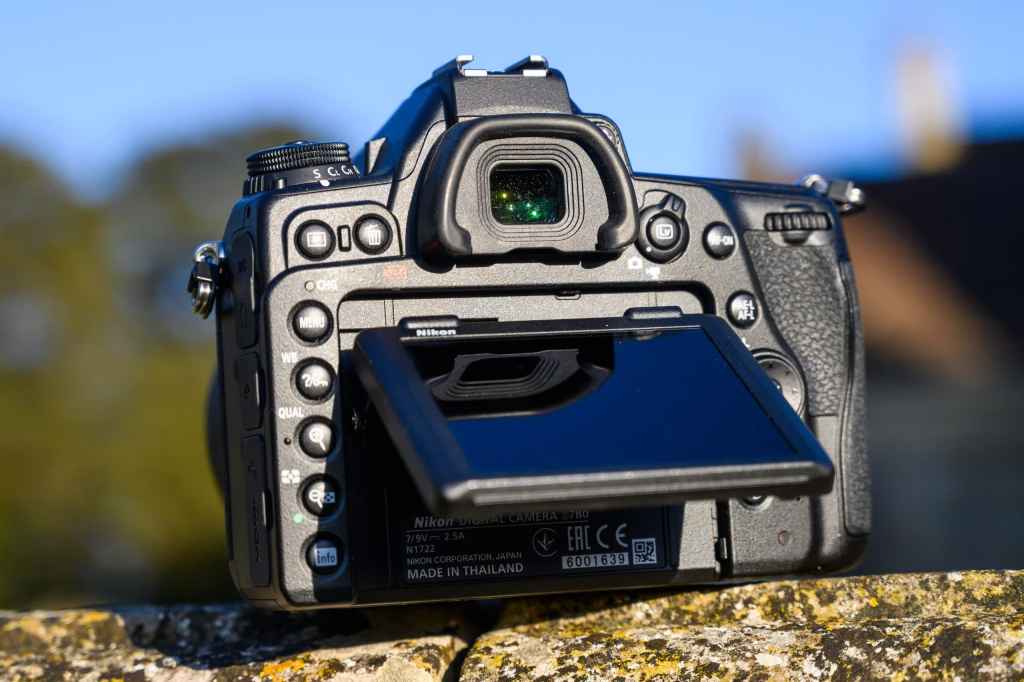
Double tapping the display in playback mode also loads a 100% view, which is good way of checking focus. One thing the touch screen doesn’t let you do though is move the AF point with your thumb when the viewfinder is raised to your eye.
Nikon D780: Performance
To get a good impression of how the D780 performs as a versatile all-rounder, I packed it as my main camera for a trip away to Iceland for a few days. The harsh conditions and sub zero temperatures it was faced with were up there with some of the most brutal I’ve experienced in my photography career, yet it didn’t flinch once and worked reliably throughout, which is testament to its solid, tank-like build quality.
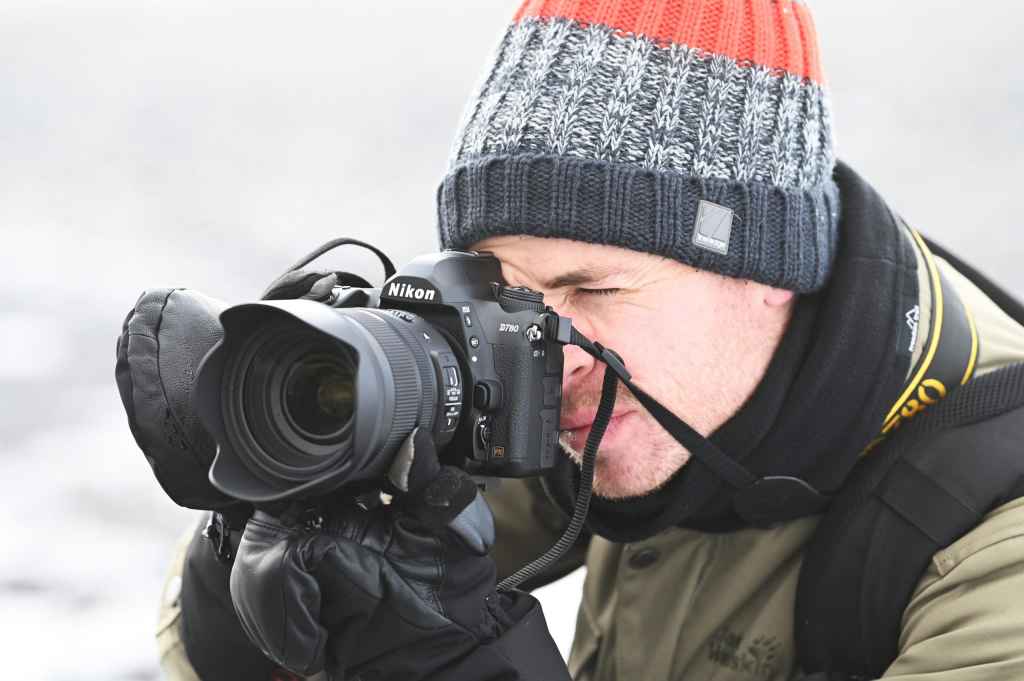
With no electronic viewfinder draining power from the battery, I found myself shooting around 1500 images a day and still had a couple of bars of battery power to spare for wirelessly transferring my best shots across to my phone back at the hotel bar.
Nikon’s SnapBridge app has come a long, long way from the criticisms it received in its infancy. The Auto link that uses Bluetooth works brilliantly if you want every image you take to be sent to your mobile device. You’ll be prompted to connect via Wi-Fi if you’d rather select images to transfer, or enter remote photography mode. Whereas in previous versions of the app the control was very limited, you can now take control of key exposure settings, white balance, P,A,S,M shooting modes and a self timer.
Getting back to battery life, I didn’t quite reach the 2060 shots per charge that Nikon claims is possible – something I put down to the freezing cold conditions I was working in. However, the ability to shoot all day with no need to recharge on the go, and carry numerous spares, did make for a refreshing change to using a mirrorless camera.
Operating the camera in Live View mode is a completely transformed experience. Autofocus speed and response is much improved. This, combined with touch focusing via the screen, makes it a pleasure to use when you want to work quickly from shooting angles that aren’t best suited to using the viewfinder.
Setting up long exposure landscape shots on a tripod at waist level for example was a breeze. The two AF systems are different, though – you don’t get identical autofocus functionality and performance in Live View as you do when shooting via the viewfinder and vice versa – this takes some time to get one’s head around.
For example, the AF modes you have at your disposal when shooting in AF-C mode via the viewfinder differ to those in Live View. You’ll find AF coverage is much more central when using the viewfinder too, whereas in Live View you can shift the AF target much closer to the edge of the frame. The speed of continuous autofocus (AF-C) in Live View is brisk, but tracking isn’t so quick or easy to setup in Auto-area AF mode. I felt inclined to use the 3D tracking mode via the viewfinder instead for subjects of predictable behaviour.
Sports and action photographers will be tempted to enter Live View to access the D780’s maximum 12fps burst mode. But my testing confirmed a higher hit-rate of sharp shots in a burst at 7fps via the viewfinder using one of the dynamic-area AF modes. The other thing to factor in of course is that you’re at risk of introducing rolling shutter artefacts to shots using the electronic shutter – not the case with the mechanical shutter.
Face and Eye detection behaves similarly to Nikon’s Z 6 and Z 7 cameras’ running the latest firmware. Shooting a series of portraits demonstrated the D780 is extremely responsive at recognising faces and eyes in Live View, both in AF-S, AF-C and AF-A modes. You do, however, need to make sure the AF area mode is set to Auto-area AF.
Users can specify which eye the camera focuses on and tell it who you’d like it to focus on in a group. Eye detection is disabled when using the viewfinder, but Face Detection continues to work well with the 3D tracking and Auto AF area modes. The next step for Nikon will be to make their impressive Face and Eye tracking available during video recording in Live View – something we’ve seen Sony achieve on the A7R IV.
The D780 will appeal to a broad spectrum of users who shoot a variety of different subjects. As such, it’s important that it can process its data quickly and efficiently. One of the advantages of working with a 24-million-pixel sensor is that the processor isn’t overloaded by gigantic file sizes.
Using an SDXC card facilitating 280MB/s read and 250MB/s write speeds revealed that it can happily shoot 100 continuous raw files at 7fps via the viewfinder before the buffer requires breather. The same number of frames were recorded when I switched to shooting Fine JPEG.
With Live View and Silent mode activated I managed to record 54 Raw files at 12fps before the buffer became full. Shooting to a 64GB capacity card in the Raw and Fine JPEG format will give you around 860 shots to play with, whereas shooting in Raw only gets you closer to 1200 frames. Having the option to change the role played by a second card inserted in slot 2 gives the D780 an advantage over Nikon’s mirrorless models such as the Z 6. For a majority of my testing I had it setup to record Raw files to slot 1 and JPEGs to slot 2, but the spare slot can also be used for overflow and backup purposes.
For image output, the D780 produces supremely impressive results from its imaging sensor. In colour, detail and dynamic range, these share a likeness with the Nikon Z 6. There’s great scope for pulling back detail in dark shadowed regions, and noise control in Raw files at high ISO is sublime.
Nikon’s Natural light auto white balance mode produces faithful colour that is neither too cool nor too warm and should be the go-to White Balance mode when working in the great outdoors. JPEG reproduction impresses too. I found colour rendition is excellent, sharpening isn’t overly aggressive and users can dial back high ISO noise reduction if they’d like to create a slightly less processed look than the default ‘Normal’ setting applies.
Nikon D780: Image Quality
The D780 plays a similar role to the Nikon Z 6 in the way it’s out to attract serious amateurs, enthusiasts, semi-pros and professionals who don’t require the same high-resolution output as Nikon’s D850 and Z 7 models that both boast a 45.7MP sensor. Our lab tests confirm that the D780’s sensor behaves identically to the chip found in the Nikon Z 6, offering impressive leverage when you’re required to pull back detail thanks to its wide-dynamic range. With virtually untraceable noise in images up to ISO 1600, users will find they can push high into the ISO range when challenged in low light, with ISO 12,800 and ISO 25,600 producing useable results.
Nikon D780: Resolution
The D780’s sensor puts in a comparable performance to the Nikon Z 6, with its 24.5MP sensor resolving a level of detail that we’d expect from a chip that features an optical low-pass filter to reduce the effects of moiré. At ISO 100, the sensor resolves 3200 l/ph, which drops to 3000 l/ph at ISO 800. The sensor manages to resolve 2800l/ph at ISO 6400, with 2700l/ph being recorded at ISO 12,800 and 2600l/ph at ISO 25,600. Pushing higher sees 2400 l/ph being resolved at ISO 51,200. The level of detail recorded at ISO 102400 (2000 l/ph) and ISO 204800 (1800 l/ph) underlines that these extended settings should be steered clear of.
Nikon D780: Noise
Nikon D780 Review: Verdict
Nikon’s D700-series has been a staple part of the full-frame DSLR market for more than a decade and close rival to Canon’s EOS 5D series since 2008. The D780 arrives a bit late for those who’ve already jumped ship to Nikon’s excellent Z-series, or other full-frame mirrorless system, but this doesn’t take anything away from what is a sensational camera that’s built to a professional standard and is a sheer delight to use. It’ll provide top-level service to photographers who aren’t fully enamoured by the thought of switching to mirrorless, especially those who want to continue using their F-mount lenses without an adapter and still swear by having an optical viewfinder.

Merging two AF systems into one camera to improve the Live View performance has been superbly executed. Saying that, it does take time to familiarise yourself with the pros and cons of both. Sports and action photographers still get reliable AF tracking via the viewfinder, supported by wider AF coverage in Live View and super responsive eye-detection AF. Introducing 4K video, advanced movie functionality, a dedicated focus stacking mode, touchscreen control, in-camera charging, a larger buffer, better connectivity and refined button layout has turned Nikon’s versatile all-rounder into an even better one.
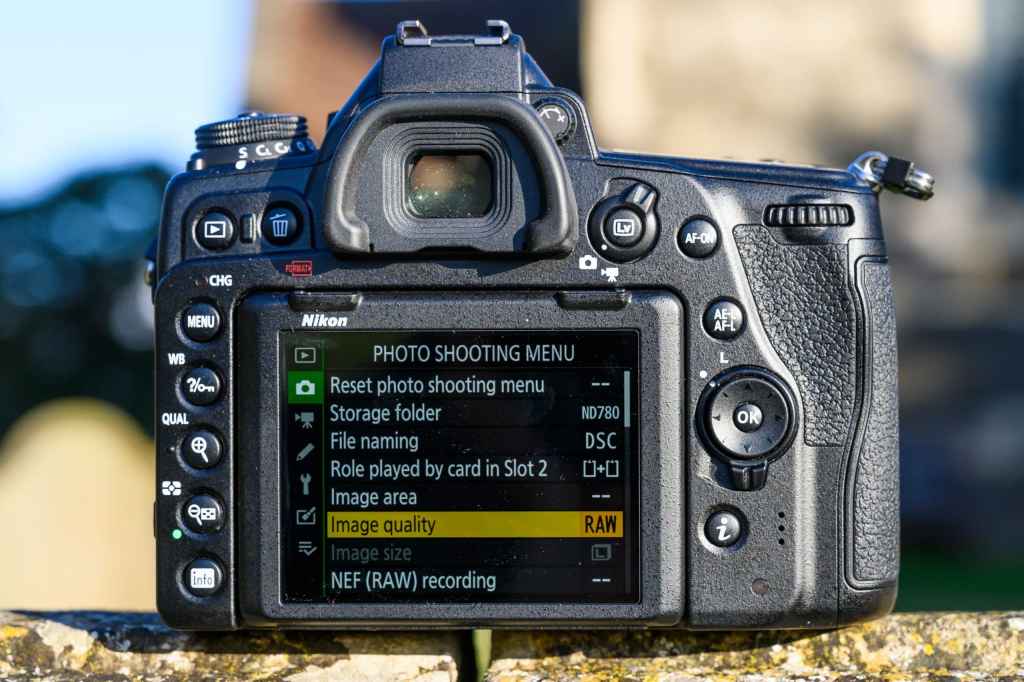
The absence of a pop up flash, joystick and optional battery grip will frustrate a few, but all things considered there’s so much more to like than there is to find fault with. People who demand dual card slot, long battery life and optical finder will find they are well served by the D780 but the mirrorless opportunity is there. For example, the Z6 II costs $1,400 / £1,379 (body only) and has the advantage of being smaller, lighter and offers in-body image stabilisation, which does make the D780 feel a bit on the pricey side.
It’s great to see Nikon continuing to cater for photographers who swear by using DSLRs, especially in a world where all the talk today is about mirrorless systems, which look set to be the future. Nikon’s outlook is all about giving customers’ choice over which route they’d rather take. For those who aren’t ready to convert to mirrorless, the D780 keeps the flag flying high for DSLRs and a mighty fine example it is too.
Find more great DSLRs from Nikon in our guide to the best Nikon DSLRs ever.
Nikon D780: Hands on first look
Nikon D780: At a glance
- $1,597 / £2,029 new, body only
- $1,440-1,800 / £1,099-1,530 used, body only
- 24.5MP full frame CMOS sensor
- $2,800 / £2,409 with Nikkor AF-S 24-120mm f/4 G ED VR lens24.5MP Full Frame CMOS sensor
- Nikon F Mount
- ISO 100-12,800 (ISO 50-204,800 extended)
- Hybrid AF system
- 3.2in, 2,360k-dot tilting touchscreen
- 12fps continuous shooting in Live View (7fps via OVF)
- In-camera USB charging
When Nikon announced the Z 50 at the end of 2019, the manufacturer was keen to stress that their strategy going forward would be to run their DSLR and mirrorless systems in tandem. The reasoning for this is that Nikon firmly believes photographers see advantages of both systems, with DSLRs continuing to be the first choice of those who prefer an optical viewfinder and having longer battery life and mirrorless cameras becoming extremely popular with those who are more conscious of size, weight and portability.
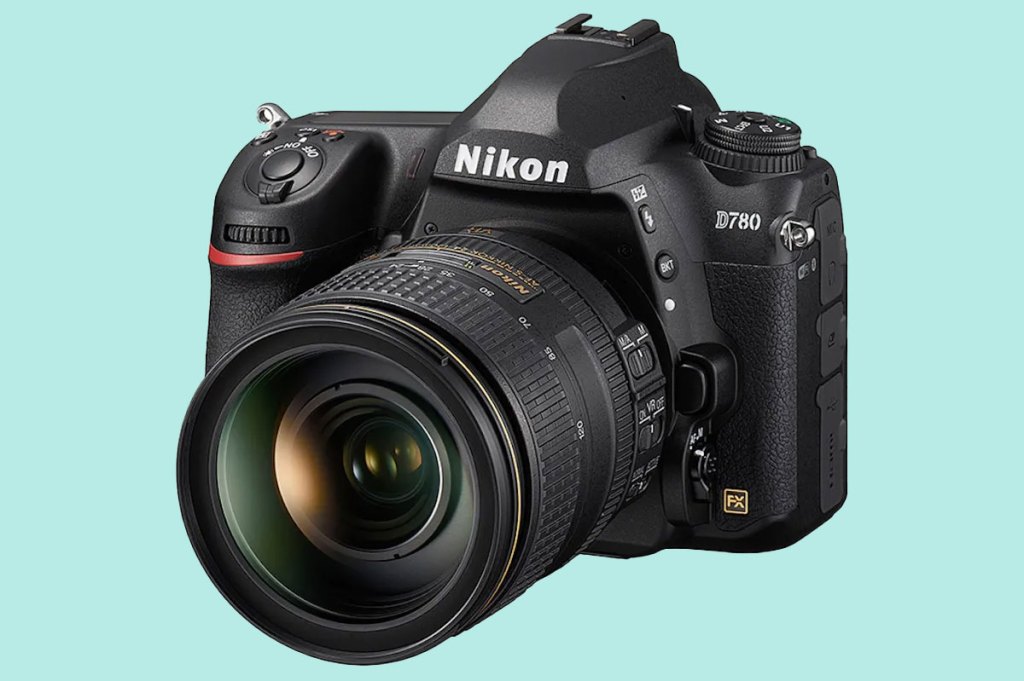
Nikon has backed up what they said by releasing a new DSLR for a new decade that’s designed to have all-round appeal with enthusiasts and professionals. The new camera we’re talking about is the Nikon D780. You could easily be mistaken for thinking this new release could mark the end for the much-loved D750, but Nikon has confirmed the D750 will remain in the lineup and it is still available new in some countries (but not in the UK): with the D780 slotting in-between the D750 and Z 6II in the company’s product lineup. Perhaps most interesting of all is the way Nikon has taken some of its learning’s from mirrorless and applied it into the D780, which is said to be Nikon’s most versatile DSLR ever.
Nikon D780: Features
Although the pixel count is similar to the D750, the D780 introduces a new full frame CMOS sensor with a resolution of 24.5-million-pixels. Like the chip used in the Nikon Z 6, the D780’s sensor features a low-pass filter and benefits from a backside-illuminated structure to maximize its light gathering capabilities.
By effectively implementing the same sensor and on chip phase detection that the Z 6 uses, users get the same 51-point autofocus system with 15 cross-type points as the D750 when focusing via the optical viewfinder and 273-point phase-detection autofocus when it’s used in Live View. This is the first time we’ve seen a Nikon DSLR borrow an AF system for Live View from one of their mirrorless models and suggests the same approach could be repeated with other DSLRs that are due a refresh in the future.
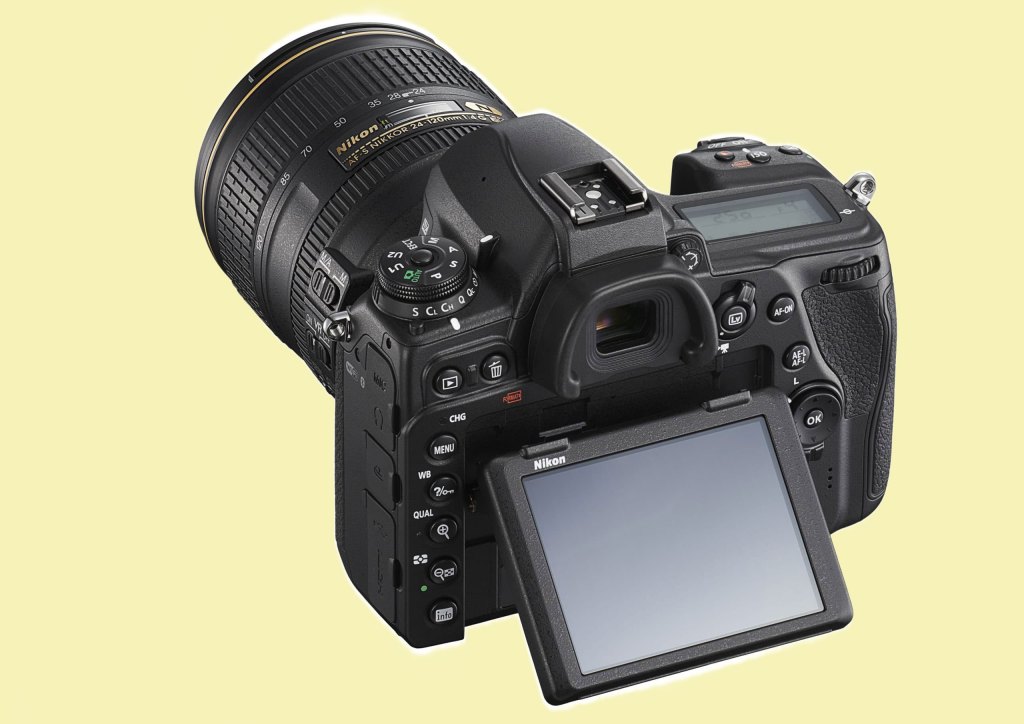
Users can expect focusing in Live View to perform just as it does on the Z 6, with the added benefit of eye-detection AF and the option to select which eye the camera focuses on. Users get all the respective DSLR/mirrorless AF-area modes one could expect and the detection range of the AF system spans all the way down to -6EV in its low-light mode. The 51-point Phase-Detection AF system is sensitive down to -3 EV.
By uniting Nikon’s latest EXPEED 6 image processor with the sensor, the D780 can shoot at 12fps in silent mode with Live View, however this drops to 7fps when it’s used in SLR mode with the optical viewfinder. The buffer is claimed to allow up to 28 Raw files to recorded continuously (or 100 JPEGs) before its limit is reached.
Comparing the D780’s specs to the D750’s also tells us it offers a wider ISO range. Whereas the D750 shoots between ISO 100-12,800 (expandable to 50-51,200), the D780 has a sensitivity range of ISO 100-51,200, expandable to ISO 50-204,800.

Shifting our focus to video, the D780 is now capable of in-camera 4K recording at up to 30fps using the full width of the sensor. Those wishing to experiment with slow motion can do so at Full HD at up to 120fps. Videographers will be pleased to receive helpful aids such as a peaking display for accurate manual focus, and zebra patterns to avoid overexposure, while microphone and headphone sockets are also built in and are located at the side of the body next to the mini HDMI, USB Type C and accessory ports.
In-camera charging via USB, dual SD card slots (both UHS-II compatible) and wirelessly connectivity (Wi-Fi and Bluetooth) round off the D780’s comprehensive set of features that’ll appeal not only to high-end enthusiasts, but also professionals who don’t require the super high resolutions offered by models like the D850 or Z 7.
Nikon D780: Viewfinder and screen
Very few changes are found at the rear of the D780. The button layout is identical with a line of five buttons arranged down the left of the screen, a four-way controller within easy reach of the thumb and a Live View button encircled by a stills/video switch.
It inherits the same 0.7x optical viewfinder from the D750 that offers 100% coverage and the screen remains the same size (3.2in) and is the tilting type. It’s good to see touchscreen functionality added, which the D750 lacked, and the resolution of the screen has also increased from 1.229k-dots to 2.360k-dots.
As for its build quality, the Nikon D780 has a dust and water resistant magnesium alloy body. This makes it just as tough as the D750 and those with eager eyes will notice a facelift to some of the dials and controls on the top plate. In all other respects the Nikon D780 is much of a likeness to the D750 and thanks to its deep handgrip, it feels very well balanced with small, lightweight lenses or larger, heavier telephoto zooms.
Nikon has confirmed that existing D750 users who might own Nikon’s MB-D16 battery grip won’t be able to use it with the Nikon D780 as it’s not compatible. With regard to battery life, we’ve been told Nikon D780 users can expect to shoot approximately 2060 shots on a single charge.
Nikon D780: First impressions
The Nikon D780 is a blend of what we liked about the D750, with innards adopted from the Nikon Z 6 and a few other improvements added for good measure. Having spent some time with the Nikon D780 during a press briefing, we can confirm its focusing in Live View performs exactly as it does on the Z 6, while out of Live View it behaves and focuses just like the D750.

For Nikon users who’ve invested heavily in F-mount lenses, aren’t ready to commit to mirrorless, but need a new, reliable and very capable workhorse, the Nikon D780 should fit the bill nicely. The improvements to focusing in Live View, the addition of touchscreen control and option to charge the battery in-camera address the criticisms we made when we reviewed the D750 back in 2014.
First impressions suggest it has potential to be one of the best all-round DSLRs we’ve ever tested, but we’ll need to wait for our review sample to arrive before we pass final judgement.
New Nikon lenses on the horizon
At the same time as announcing the D780, Nikon released a pair of new zooms. With the latest arrival in the F-mount being the NIKKOR AF-S 120-300mm f/2.8E FL ED SR VR – a pro-spec zoom designed for sports and action photography with high-end DSLRs like the forthcoming Nikon D6.
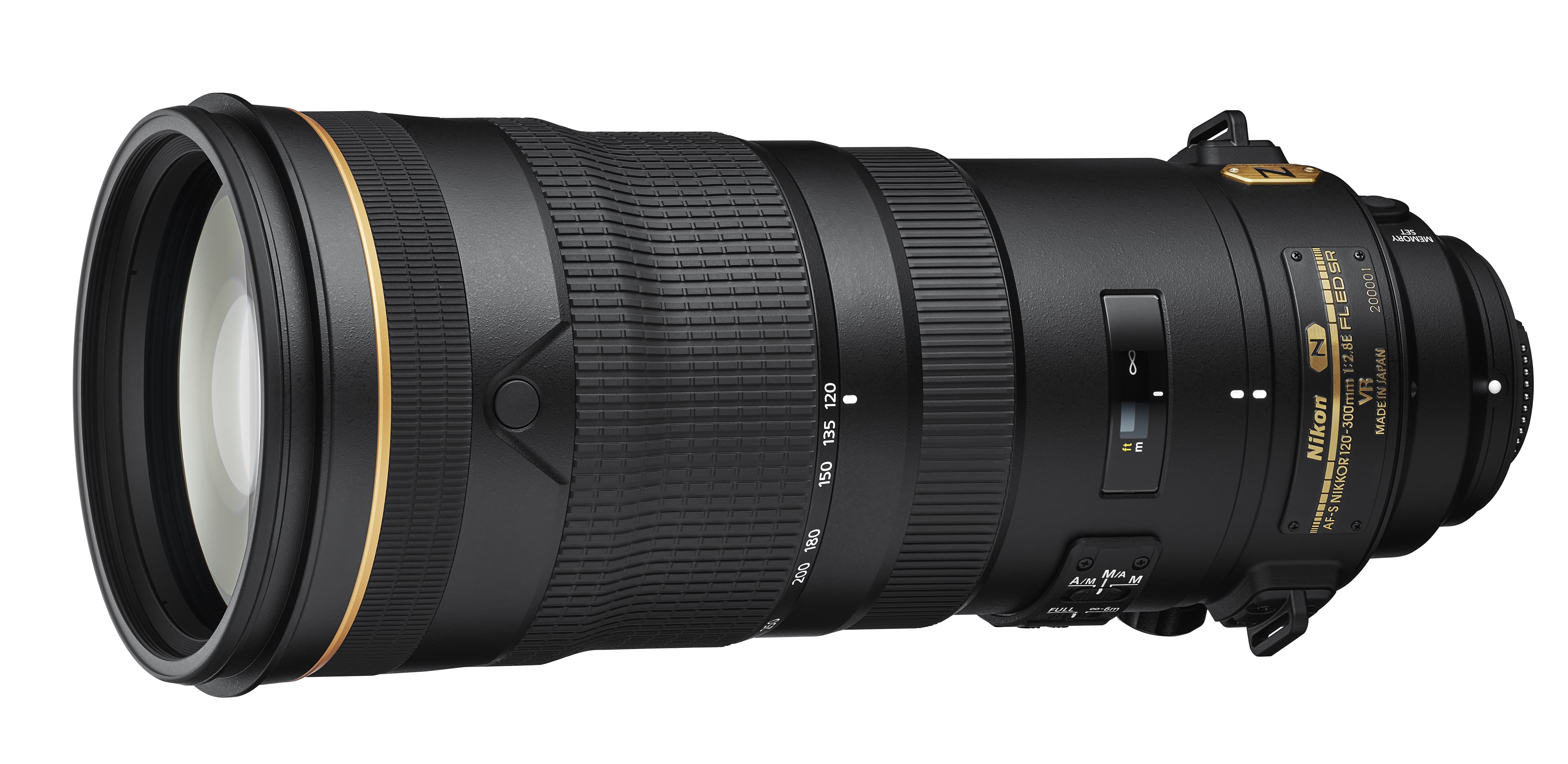
Its arrival ties in with this year’s Tokyo 2020 Olympic games where many pros shooting Nikon will call for a fast medium telephoto zoom in demanding low-light situations. It features a complex construction of 25 elements in 19 groups and in addition to Extra-low dispersion (ED) glass, special short wavelength spectrum (SR) glass is used to combat blue fringing that traditional lenses typically have a hard time correcting.
Claimed to offer a prime-like lens performance, it’s fully weather sealed, has built-in Vibration Reduction (VR) that’s effective to four stops, a memory recall button, works with all of Nikon’s 1.4x and 2x tele converters and features an integrated tripod foot.
The second lens – the NIKKOR Z 70-200mm f/2.8 S is more of a mainstream optic and has been included in Nikon’s Z lens roadmap for a while. It strengthens Nikon’s lens portfolio for its Z series cameras and is a lens many have been patiently waiting for.
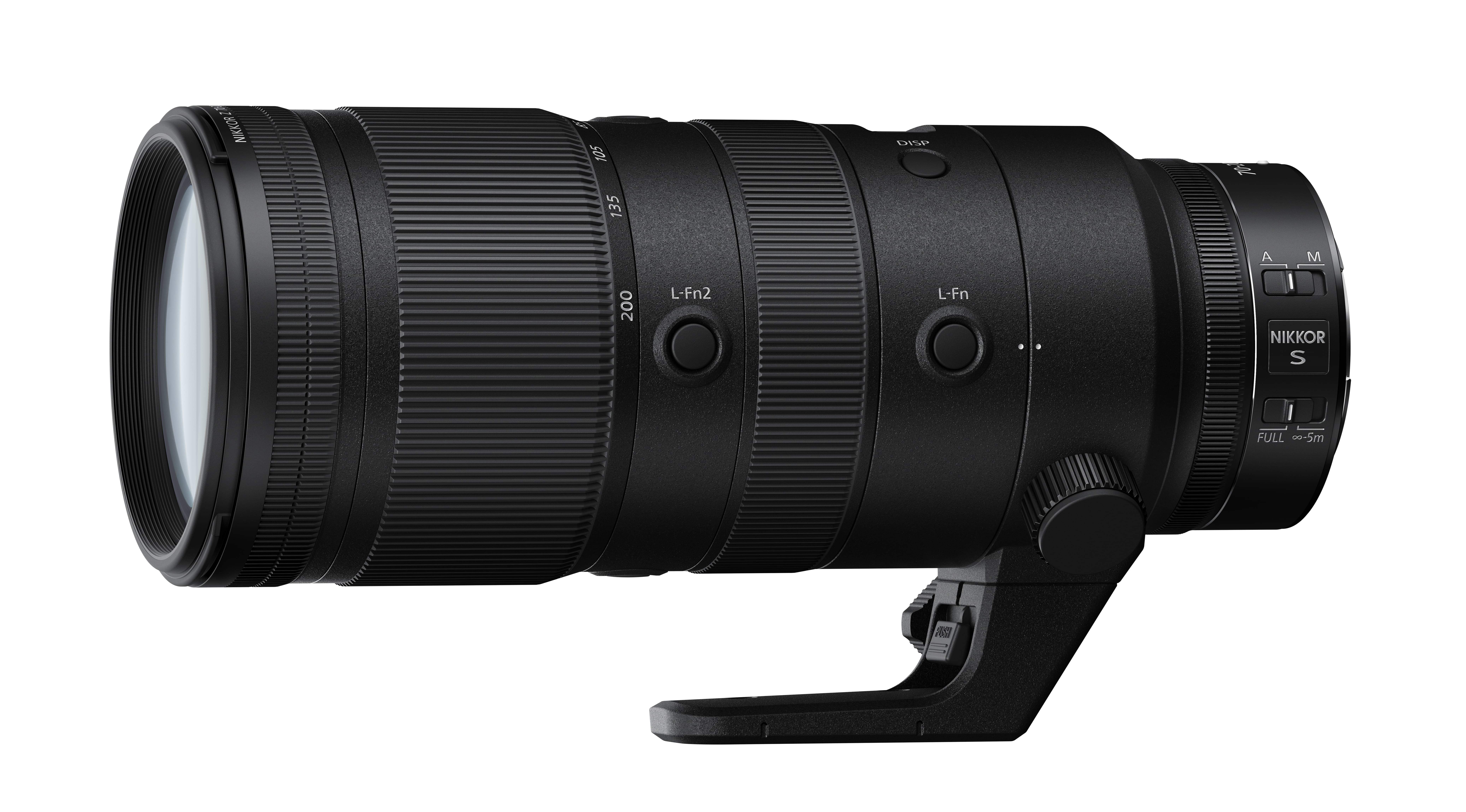
It has a construction of 21 elements in 18 groups and features Nikon’s special short wavelength spectrum (SR) glass in addition to ARNEO and fluorine coatings. Other key features include a weather sealed construction, 9-blade aperture, control ring, Fn button to which 21 different functions can be assigned, and 1m minimum focus distance at full telephoto (0.5m at 70mm).
The NIKKOR Z 70-200mm f/2.8 S accepts filters and adapters via a 77mm thread and it weighs 1360g without the tripod collar, or 1440g when it’s fitted.
Follow AP on Facebook, Twitter, Instagram, YouTube and TikTok.

